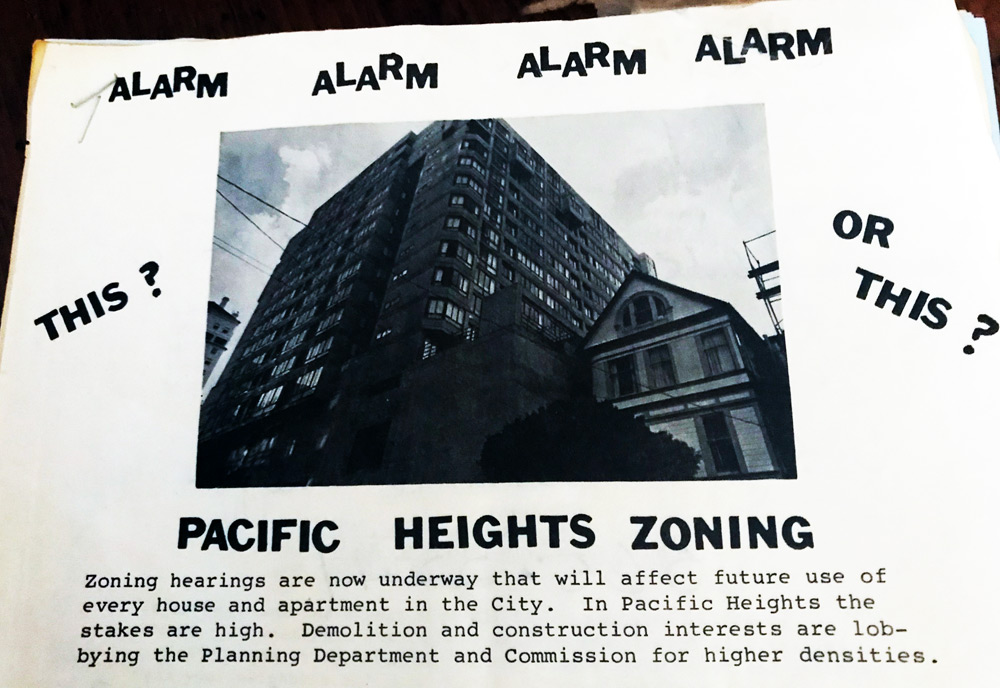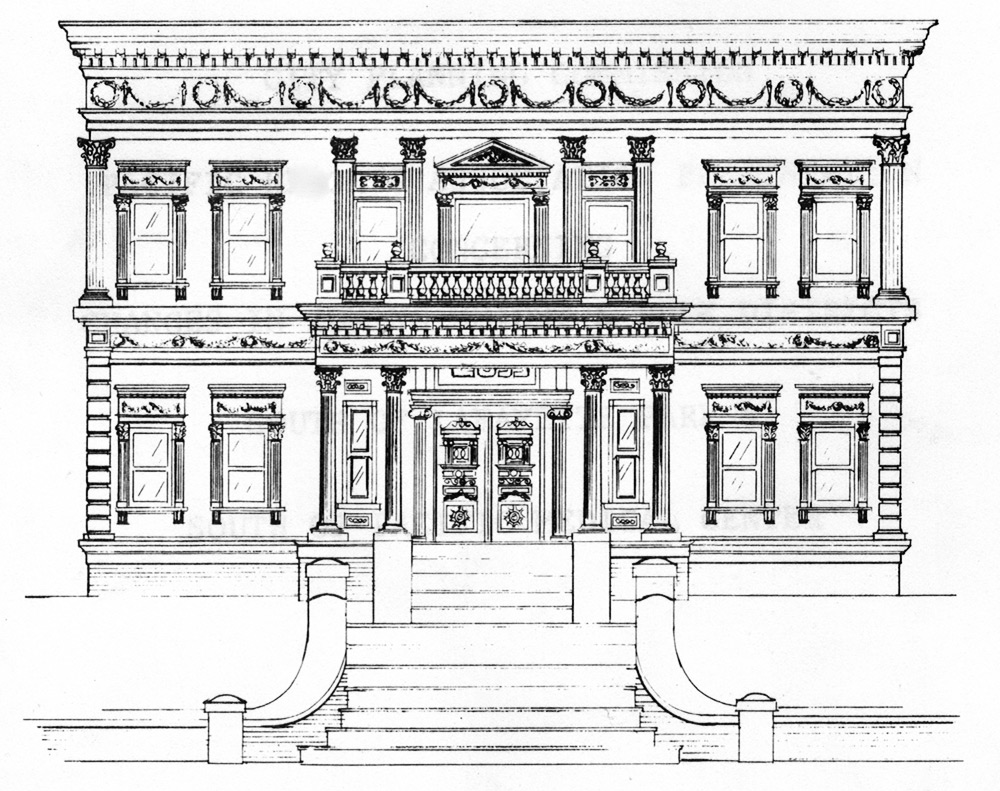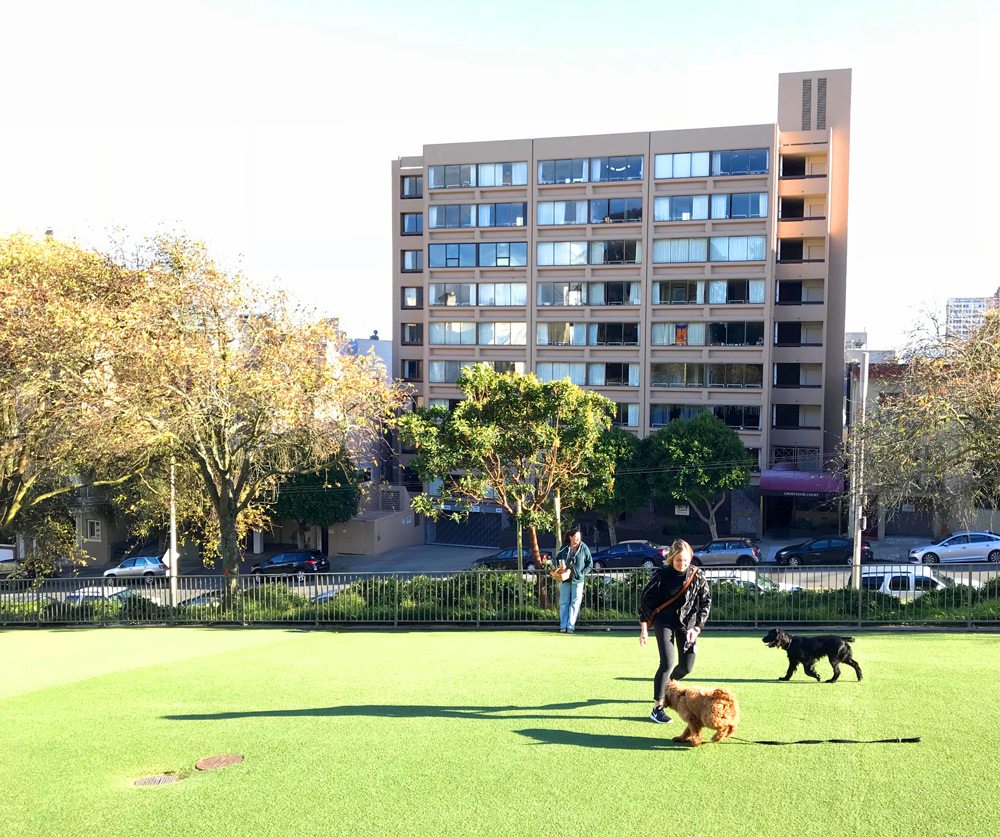By SUSAN SWARD
On a Friday in April of 1972, Charlotte Maeck got a purple postcard in the mail at her Pacific Heights residence that she initially thought was a hosiery advertisement from the I. Magnin department store.
On closer look, she saw it was a city announcement of a hearing the following Tuesday on a proposal to rezone the areas between Van Ness to Steiner and Union to Washington to permit structures of up to 160 feet — or 16 stories. Before then, height limits of 65 feet and 105 feet existed in various parts of Pacific Heights.
Maeck, who was busy raising her four children with her husband, orthopaedic surgeon Benjamin Maeck, in their home on Pacific Avenue, knew nothing about planning codes and had never been involved in the brawling political fights over development in San Francisco.
She came from Staten Island, where her grandfather founded a marine hardware company. “We were concerned about neighborhoods, and families watched what went on,’’ Maeck recalls. But “I knew nothing about zoning.”
That was about to change.
After being advised by a Haight Ashbury neighborhood activist that if nothing were done, the city would roll over Pacific Heights and implement the higher height limit, Maeck went into action.
The day after receiving that purple postcard, she oversaw the production of 5,000 flyers proclaiming: “Alarm, Alarm, Alarm, Alarm.” Families and their children, including Maeck’s, walked block by block, distributing the flyers. A meeting was called for the next day, Sunday, at Calvary Presbyterian Church.
That day the Pacific Heights Association was formed — and a 40-foot height limit for the neighborhood was set in motion.
The fledgling association — later renamed the Pacific Heights Residents Association — covered the neighborhood from Union to California and Van Ness to Presidio. Several hundred residents attended that first meeting and voted unanimously to fight for a 40-foot height limit.
Maeck says other neighborhoods had negotiated with the city and won 40-foot height limits. “I had no idea why our neighborhood was left out, but we wanted that 40-foot limit as well,’’ she says. “We had known nothing about this until I got the postcard announcement. We wanted to keep our neighborhood as everyone else had theirs — to preserve our homes and families,” she adds. “I hadn’t wanted this fight, but it fell into my lap. Paul Revere went out to warn the citizens — and we had to do the same.’’
Allan Jacobs, now a professor emeritus of city and regional planning at UC Berkeley, recalled that Maeck fought with great energy for her cause. “She was good, she was strong,’’ says Jacobs, who developed San Francisco’s first comprehensive master plan during his tenure as the city’s planning director from 1967 to 1975.
Faced with the association’s opposition, city planners delayed action on the proposal and told its leaders they would have to get petitions supporting the 40-foot limit from property owners in the neighborhood.
“The city told us we’d have to come in with at least 90 percent of residents in the area agreeing to the 40-foot limit,’’ recalls Maeck, who became the association’s first president. “So we hit the streets.” The association faced a three-week deadline to collect signatures. In that time, Maeck says more than 91 percent of those contacted signed the petition for the height limit.
♦
To pursue the fight, Maeck transformed the third floor of her home into a campaign headquarters.
“The whole top floor of my home was charts and people,’’ she says. “I had no computer, and I still don’t. I was running around every night giving messages to the association’s board members.’’
Area captains were assigned. Each time a property owner signed the petition, that property was colored in on maps created to keep track of the signature collection drive. Residents south of California Street heard of the fight and asked the association to expand the area seeking the 40-foot limit.
“During World War II, Octavia and all those blocks below Sacramento were single family houses, and during the war they were run-down rooming houses,’’ Maeck says. “After the war some of the Japanese (who had been interned in camps) returned to the area, and working people came in with no money to speak of. We heard from all kinds of people. They called me up and said: ‘We are fixing our places up and we want that 40 feet.’ ”
In planning circles, there was some amusement that any area south of California Street could be considered part of Pacific Heights. But the association agreed to expand the area to be governed by the 40-foot limit south to the mid-line of Bush Street, the northern boundary of the Redevelopment Agency’s jurisdiction.
In June 1972 the Planning Commission approved the 40-foot height limit for the neighborhood, except for the area south of Lafayette Park and what was then the Pacific Presbyterian Medical Center. Maeck and the association found this unsatisfactory and enlisted then-Supervisor Dianne Feinstein to push to include the disputed area. That move succeeded. Today all of the land included in the Pacific Heights Residents Association from Van Ness to Presidio Avenue and Union to Bush Street is governed by the 40-foot limit, except for portions of pre-existing, highrise corridors including Gough, Franklin, Laguna and a block and a half of Buchanan at Sacramento.
Even after the Planning Commission adopted the height limit for the area, the push to enshrine the limit into city records was not over. The Planning Department told the association it had to redraw the maps it had created to mirror the lower heights, Maeck says. So association members, assisted by the late John Kirkpatrick, a retired architect from Skidmore Owings & Merrill, went block by block, researching the occupancy of every building affected by the 40-foot limit. The late architects Herbert McLaughlin and John Field were also part of the team.
♦
In 2007 Maeck’s husband died, and a few years ago she sold her home and moved to a condominium near one of her sons and his wife and baby. Now 91, she still attends Pacific Heights Residents Association monthly board meetings to keep up on issues, and she vigorously opposes legislation by state Senator Scott Wiener to increase height limits up to 85 feet, or eight stories, on properties near a transit stop. The measure, SB 827, would be effective throughout the state, and would up-zone almost all of San Francisco.
“Over 90 percent of the city’s parcels currently have a height limit of 45 feet or less,” according to a Planning Department study. “Under this bill many of them would have height limit increases, to height limits ranging from 45 feet on narrower streets to 85 feet on wider streets.”
When Wiener, a San Francisco Democrat, introduced his bill, he said his aim was to add housing near public transportation, stating: “One of the fundamental problems is we have enormous swaths of land in California, including in some of the most transit-accessible parts of the state, that are zoned for hyper-low-density housing.”
Maeck is not persuaded.
“That bill is a disaster. The problem is that buses run all over this city, and this legislation would destroy the neighborhoods with up to 85-foot buildings along the transit corridors and into adjacent residential neighborhoods,’’ she says. “Why should I spend $5 million if I might move in only to learn the neighbors next door plan to go up to 80 or 85 feet?”
As Maeck looks at the city today, she worries that people no longer value the residential qualities of neighborhoods such as Pacific Heights. “We are in a new situation,’’ she says. “New people have come to the city, and they don’t value neighborhood character in the same way.”
MOLERA HOME: THE ONE THAT GOT AWAY
When Charlotte Maeck recalls the development fights she participated in, her biggest regret is the loss of the Molera family home at 2055 Sacramento Street. The dwelling was located east of Octavia Street, facing Lafayette Park, and today is the site of the hulking 10-story, 86-apartment Grosvenor Court, built in 1974.
The home had been the residence of Frances Molera, the San Francisco-born great niece of General Mariano Guadalupe Vallejo. The descendant of a pioneer Monterey County family, Molera had inherited from her family vast tracts of land in Big Sur and Castroville.
The 4,800-acre Andrew Molera State Park in the Big Sur area was originally part of the Molera family’s Rancho El Sur property. Molera, who never married, sold the land to the Nature Conservancy with the promise it would become a state park named after her brother, who died in 1931. She died at the age of 88 in 1968, and the park opened in 1972.
Maeck said that in 1972 and 1973, many preservationists battled to save the Molera home in San Francisco, with Chronicle columnist Herb Caen taking up their cause. “Why would anyone not want to save a classic landmark structure -— to try to save our history?’’ she asks. “It was sad that history was wiped away.”
Reflecting back over the Pacific Heights Residents Association’s 40-plus years of existence, Maeck says the group also got involved in numerous citywide issues. Working with activists from the Mission and Haight Ashbury, in 1972 the association organized the Coalition for San Francisco Neighborhoods, which still exists today. She says the Pacific Heights group also supported environmental safeguards for development projects citywide.
Under the leadership of the late Anne Bloomfield, an association board member, the city established the Webster Street Historic District, which consists primarily of houses in the Italianate architectural style built between 1878 and 1880.
The association was also part of the unsuccessful fight to save the City of Paris department store.
— Susan Sward
Filed under: Civics, Locals, Neighborhood History, Real Estate







